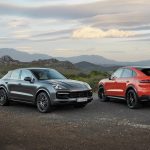LATEST ARTICLES
BEST BLOGS
The planet’s most powerful 1076whp BMW M5 F10
With a monster engine making over 1000whp, this is the planet’s most powerful F10 M5. Brace yourself… Words: Elizabeth de Latour. Photos: Viktor Benyi.
Wide-body WTCC-style BMW 335i E90
First class WTCC-style BMW 335i E90. Full-on wide-body beast Words: Daniel Bevis Photos: Peter Wu When it came to choosing his first BMW, Alex Aguiniga knew exactly what he wanted and, while he didn’t initially imagine it turning out like this, every element of the build is pure class…
Tuned 554hp BMW M4 F82 track build
Full-on, 554hp track beast. This is Built to take on the track, this stripped-out, full-on M4 is an absolute beast. Words: Elizabeth de Latour. Photos: Patrick Lauder.
680whp turbo S54 BMW M3 E46
Boost Mode 680whp turbo BMW M3 E46. Making a mighty 680whp from its turbocharged S54, this full-on E46 M3 is one hell of a performance machine. Words: Elizabeth de Latour. Photos: Peter Wu.
Tuned 702hp supercharged, meth-injected BMW M5 E60
With a supercharger and meth injection on board, this ferocious E60 M5 is on another level when it comes to performance. Words: Elizabeth de Latour. Photos: Matt Richardson.
240whp S14-engined 2.5-litre BMW M3 E30
BMW E30 M3 Perfection Stunning, flawlessly modded 2.5 beauty. Built over 17 years, combining OE elements with aftermarket additions and topped off with a 2.5 S14 under the bonnet, this E30 M3 is really something special. Words: Elizabeth de Latour Photos: Tony Lopez.





